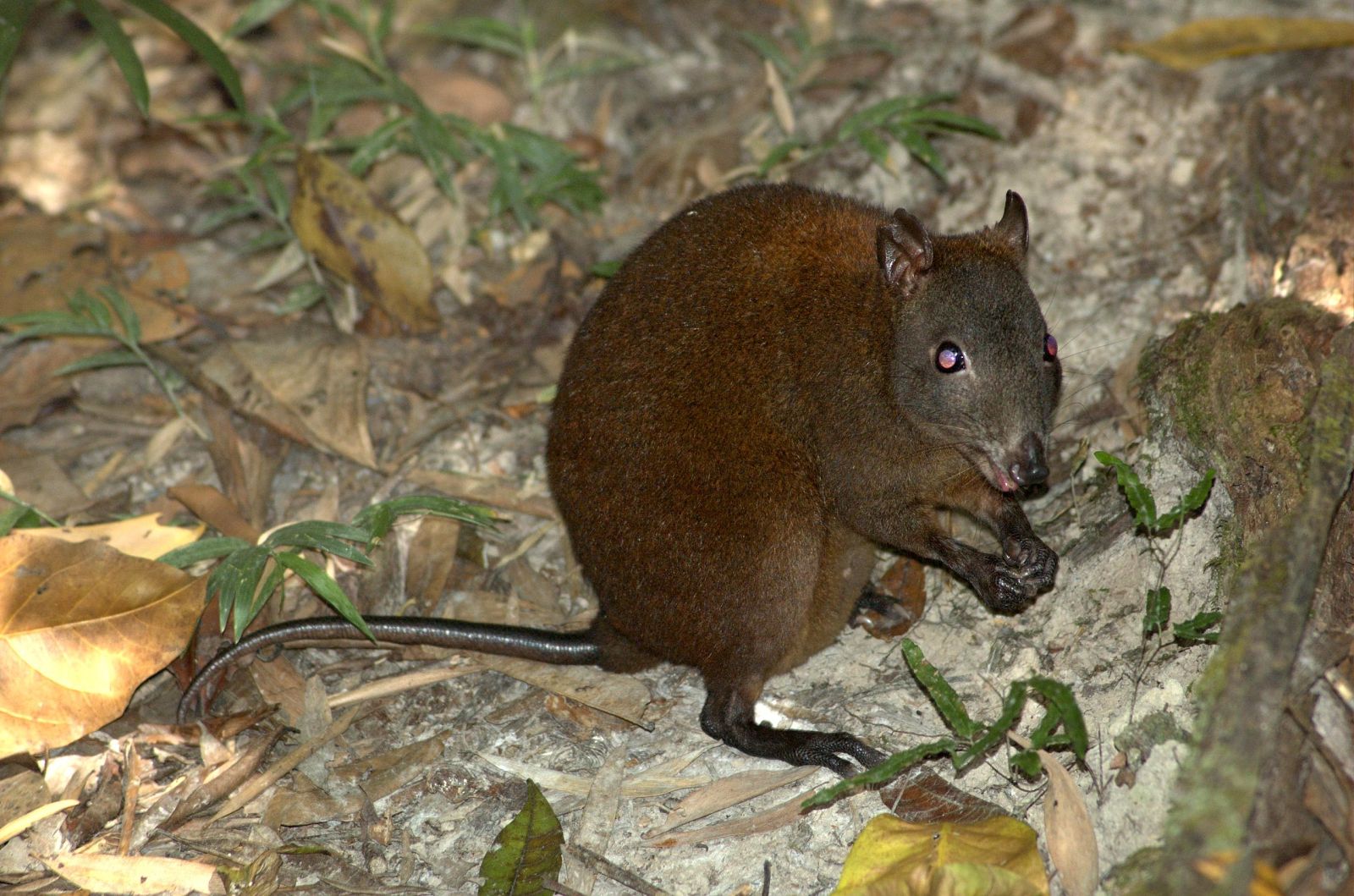Do you know the musky rat-kangaroo, this marsupial with a unique gait? 🦘
Follow us on Google News (click on ☆)
Weighing just 500 grams (about 1.1 pounds), the musky rat-kangaroo stands out for its unique mode of movement among marsupials. Unlike its kangaroo cousins, it does not hop but uses a distinctive gait, combining synchronized front and hind limbs. This peculiarity makes it a valuable subject for studying the evolution of locomotion in macropods.
Recent research, published in Australian Mammalogy, has focused on analyzing this animal's movements. Using high-speed video recordings, scientists have decoded its gait, revealing an unusual synchronization of limbs. This study sheds new light on the early stages of kangaroo evolution.
The musky rat-kangaroo primarily uses a gait called 'bound' or 'half-bound,' where the hind limbs move together. This trait suggests an evolutionary link to modern kangaroos. Observations also confirm that this animal never hops, even at high speeds.
This discovery opens new perspectives on kangaroo evolution. It suggests that bipedal hopping may have evolved from a quadrupedal gait similar to that of the musky rat-kangaroo. However, the precise reasons for this transition remain a mystery, as does the exceptional energy efficiency of hopping kangaroos.
Future research will need to explore these questions, particularly by relying on fossil discoveries. Though small, the musky rat-kangaroo plays a key role in understanding the evolutionary history of kangaroos. Studying it could reveal how and why these animals adopted their distinctive locomotion.
For now, the musky rat-kangaroo continues to captivate scientists and nature enthusiasts alike. Its unique behavior and evolutionary importance make it an essential subject for anyone interested in Australian biodiversity and species evolution.
Why did kangaroos develop their bipedal hop?
The bipedal hop of kangaroos is a unique adaptation that allows them to cover great distances with remarkable energy efficiency. This locomotion relies on energy storage in the Achilles tendon, reducing the effort required for each bound.
Studies on the musky rat-kangaroo suggest that bipedal hopping may have evolved from a synchronized quadrupedal gait. This transition could have been favored by environmental changes, such as the drying of the Australian climate, which altered landscapes and available resources.
Fossils of ancient kangaroos indicate a diversity of now-extinct locomotion methods. These discoveries show that the evolution toward bipedal hopping was not linear but the result of trial and error over millions of years.
Understanding this evolution requires a multidisciplinary approach, combining anatomy, biomechanics, and paleontology. The musky rat-kangaroo, with its unique gait, offers a window into the early stages of this process.
